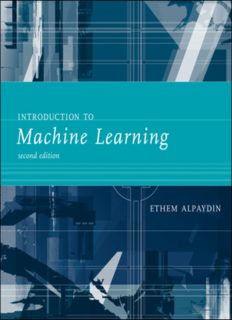Plasma Arc Welding, Submerged Arc Welding, Electrogas and Electroslag Welding.
Contents:-
- Explain plasma arc welding along with their types.
- Explain the process of needle arc micro plasma welding.
-
What are the advantages, disadvantages and applications of plasma arc welding ?
-
Explain the submerged arc welding and also give advantages, disadvantages and applications.
-
Explain electrogas welding process and also give advantages, disadvantages and applications.
-
Explain in brief about electroslag welding ? Also mention advantages and disadvantages of electroslag welding.
Explain plasma arc welding along with their types.
A. Plasma Arc Welding :
1. Plasma arc welding is an arc welding process wherein coalescence is
produced by the heat obtained from a constricted arc set up between a
tungsten electrode and the water cooled nozzle.
2. The process employs two inert gases, one forms the arc plasma and the
second shields the arc plasma.
3. Filler metal may or may not be added and pressure normally is not
employed.
B. Principle of Plasma Arc Welding :
1. Plasma arc welding is a constricted arc process.
2. The arc is constricted with the help of a water cooled small diameter
nozzle which squeezes the arc, increases its pressure, temperature
and heat intensively and thus improves arc stability, arc shape and
heat transfer characteristics.
C. Types of Plasma Arc Welding :
i. Non-Transferred Arc :
1. The arc is formed between electrode (–) and the water cooled
constricting nozzle (+).
2. Plasma arc comes out of the nozzle as a flame. The arc is independent
of the workpiece and the workpiece does not form a part of the electrical
circuit. Just as an arc flame, it can be moved from one place to another.
3. The non-transferred arc plasma possesses comparatively less energy
density as compared to transferred arc plasma and it is employed for
welding and in application involving ceramics or metal plating.
ii. Transferred Arc :
1. The arc is formed between the electrode (–) and the workpiece (+).
2. A transferred arc possesses high energy density and plasma jet velocity.
For this reason it is employed to cut and melt metals.
3. For initiating a transferred arc, a current limiting resistor is put in the
circuit which permits a flow of about 50 A between the nozzle and the
electrode and a pilot arc is established between the electrode and the
nozzle.
4. As the pilot arc touches the job, main current starts flowing between
electrode and job, thus igniting the transferred arc.
5. The pilot arc initiating unit gets disconnected and pilot arc extinguishes
as soon as the arc between the electrode and the job is started. The
temperature of a constricted plasma arc may be of the order of 8000 –
25000 °C.
Explain the process of needle arc micro plasma welding.
1. In micro plasma welding (MPAW) arc is formed between the electrode
and the work piece in an inert atmosphere to fuse metal in a joint area
and produce a molten weld pool.
2. The uniqueness of MPAW from other welding processes is the electrode
is positioned within the body of the torch and the plasma forming gas is
separated from the shielding gas envelope. While in the other processes
the electrode is exposed to the atmosphere during the process.
3. It has a mechanism called the pilot arc that is struck between the electrode
and nozzle to initiate the main welding arc. The pilot arc can be shut off
after the main are starts or can be kept on all the time.
4. The current range of micro plasma arc varies from 0.1 A – 15 A. Even at
welding current at 0.1 A the length can be varied possibly up to 10 mm
without affecting stability of the arc.
5. The needle like stiff arc minimises wander and distortion.
6. Micro plasma arc welding torches are available both in manual and full
automated mode.
7. Manual MPAW generally can work in all position where in fully
mechanized MPAW is done in the flat and horizontal positions.
8. Generally in micro plasma arc welding DC current source is used. Micro
plasma arc welding current generally can vary from a range 0.01 amp to
15 amp.
9. Pulsing facility is provided by power source. The pulsed arc has the
ability to produce highest and precise weld quality.
What are the advantages, disadvantages and applications of plasma arc welding ?
A. Advantages of Plasma Arc Welding :
1. Stability of arc and uniform penetration.
2. Simplified fixtures and rewelding of the root of the joint saved.
3. It is possible to produce fully penetrated key hole welds on pieces upto
and about 6 mm thick with square butt joint.
4. Excellent weld quality.
5. Plasma arc welding can produce radiographic quality welds at high
speeds. Weld steel pieces upto about one half inch thick, square butt
joint in single run with no filler metal addition.
B. Disadvantages of Plasma Arc Welding :
1. Infrared and ultraviolet radiations necessitate special protection devices.
2. Welders need ear plugs because of unpleasant, disturbing and damaging
noise.
3. More chances of electrical hazards are associated with this process.
4. The process is limited to metal thickness upto 25 mm.
5. Inert gas consumption is high.
C. Applications of Plasma Arc Welding :
1. Single run autogenous and multi-run circumferential pipe welding.
2. In tube mill applications.
3. Welding cryogenic, aerospace, high temperature corrosion resistant
alloys and steel rocket motor cases.
4. Nuclear submarine pipe system.
5. Welding of carbon steel, stainless steel, nickel, copper, brass, monel
metal, aluminium, titanium, etc.
Explain the submerged arc welding and also give advantages, disadvantages and applications.
A. Submerged Arc Welding :
1. It is an arc welding process wherein coalescence is produced by heating
with an electric arc or arcs set up between a bare metal electrode or
electrodes and the job.
2. The arc, end of the electrode and molten pool remain completely hidden
and arc invisible being submerged under a blanket of granular material
(flux).
B. Principle of Submerged Arc Welding :
1. In submerged arc welding process, instead of a flux covered electrode,
granular flux and a bare (or copper coated) electrode is used.
2. Arc between the electrode and job is the heat source and remains
buried under the flux.
3. The flux serves as a shield and protects the molten weld pool from
atmospheric contamination.
4. The process may be semi automatic or automatic.
C. Advantages of Submerged Arc Welding :
1. Molten flux provides very suitable conditions for high current to flow.
Great intensities of heat can be generated and kept concentrated to
weld thicker sections with deep penetration.
2. Because of high heat concentration, considerably higher welding speeds
can be used.
3. High metal deposition rates can be achieved. Single pass welds can be
made in thick plates with normal equipment.
4. Welding is carried out without sparks, smoke, flash or spatter.
D. Disadvantages of Submerged Arc Welding :
1. The flux needs preplacing of the same on the joint which is not always
possible.
2. The process is limited to welding in flat position and on metal more
than 4.8 mm thick. In small thicknesses burn through is likely to
occur. 3. The process requires edge preparation and accurate fit up on the joint.
Otherwise the flux may spill through the gap and arc may burn the
workpiece edges.
4. Flux is subjected to contamination that may cause weld porosity.
E. Applications of Submerged Arc Welding :
1. Fabrication of pipes, penstocks, pressure vessels, boilers, structural
shapes, rotary kilns, rail road, and earth moving equipment, cranes
and under structure of railway coaches and locomotives.
2. Automotive, Aviation, ship-building and nuclear power industry.
3. Rebuilding of worn out parts and depositing wear resisting alloys,
hardfacing of tractor rollers and idlers, and crane pulleys.
4. For welding metals like mild steel, medium and high tensile low alloy
steels.
Explain electrogas welding process and also give advantages, disadvantages and applications.
A. Electrogas Welding :
1. Electrogas welding is a method of gas metal arc welding or flux cored
arc welding wherein an external (shielding) gas is supplied and molding
shoes confine the molten weld metal for vertical position welding.
2. Electrogas welding was developed from electroslag welding.
B. Principle of Operation : Electrogas welding may be carried out using :
i. Solid Electrode Process :
1. The welding gun is installed over the joint between the two plates to be
welded.
2. The weld area is purged with the shielding gas that is CO2
or an argon CO2
mixture.
3. The electrode is fed through the welding gun and an electric arc is struck
between the starting plate at the bottom of the joint and the electrode.
4. The arc heat melts the electrode and groove faces. The molten pool
thus formed remains confined between two water cooled dams (molding
shoes). As the molten metal solidifies, the molding shoes move upward
with the welding head.
5. Depending upon thickness one or two electrode wires may be used.
6. In this process, no flux is present on the top of molten metal pool.
7. Plates 12.5 mm to 75 mm thick are most commonly welded using solid
electrode electrogas welding
ii. Flux Cored Electrode Process :
1. The tubular portion of the electrode is made of low carbon steel, and
the core contains flux and alloying elements are required to adjust
weld metal composition.
2. In this process, therefore, a thin layer of molten slag forms and remains
on the top of the molten weld metal.
3. Gas shielding is used when the electrode type needs it. Most electrogas
welding is done with a square groove joint.
C. Advantages of Electrogas Welding :
1. Weld is much more visible to the welder.
2. Restarting the weld is much easier.
3. As welded impact properties are better. Thus, electrogas process is
preferred if no heat treatment follows welding.
4. Welding is usually done in one pass.
D. Disadvantages of Electrogas Welding :
1. For job thicknesses above 75 mm, electroslag welding is usually more
practical than electrogas welding.
2. As compared to electrogas welding, electroslag welding usually produces
welds that are cleaner and more nearly crack free.
3. In electrogas process, porosity generally increases as job thickness
increases, because gas shielding becomes less effective.
E. Applications of Electrogas Welding :
1. For joining thick plates in vertical position.
2. Ships, bridges, large tanks, pressure vessels, offshore drilling rigs and
some parts for high rise buildings are profitably fabricated by the
electrogas welding process.
Explain in brief about electroslag welding ? Also mention advantages and disadvantages of electroslag welding.
A. Electroslag Welding :
1. Electroslag welding is a type of arc welding wherein the coalescence is
produced by molten slag which melts the filler metal and the surface of
the work to be welded, electroslag welding is quite similar to vertical
submerged arc welding.
2. In electroslag welding process a granular flux is placed in the gap
between the plate being welded and as the current is turned on, welding
takes place in a watercooled copper shoes that bridge the gap of the
joint as the flux melts, a slag blanket from 25.4 to 38.1 mm thickness is
formed, high resistance of the slag causes most of the heating for the remainder of the weld thus electroslag welding is a progressive process
of melting and solidification from the bottom to upward.
3. The maximum thickness that can be weld by this process is upto
100 mm.
4. Molten metal and slag are retained in the joint by means of copper
shoes that automatically move upward as the weld progresses by means
of a temperature sensitive mechanism.
B. Advantages of Electroslag Welding :
1. Joint preparation is quite simple as compared to other welding processes.
2. Very high thickness plate can be very easily welded in a single pass
more economically.
3. It gives extremely high deposition rate.
4. Distortion and thermal stresses are in very low percentage.
5. Flux consumption is very low.
C. Disadvantages of Electroslag Welding :
1. Process is only limited to vertical position.
2. Electroslag welding tends to produce rather large grain size.
3. Complex shape joint cannot be welded by this process.
4. More chances of hot cracking and notch sensitivity in the heat affected
zone.








